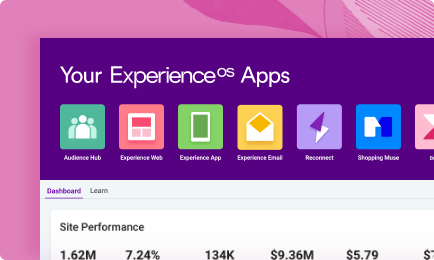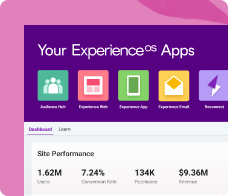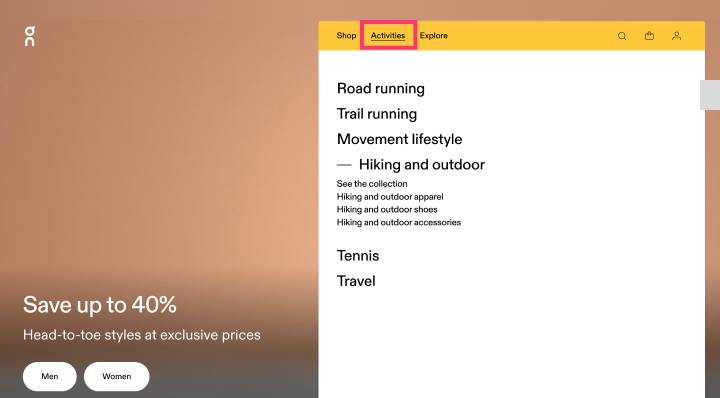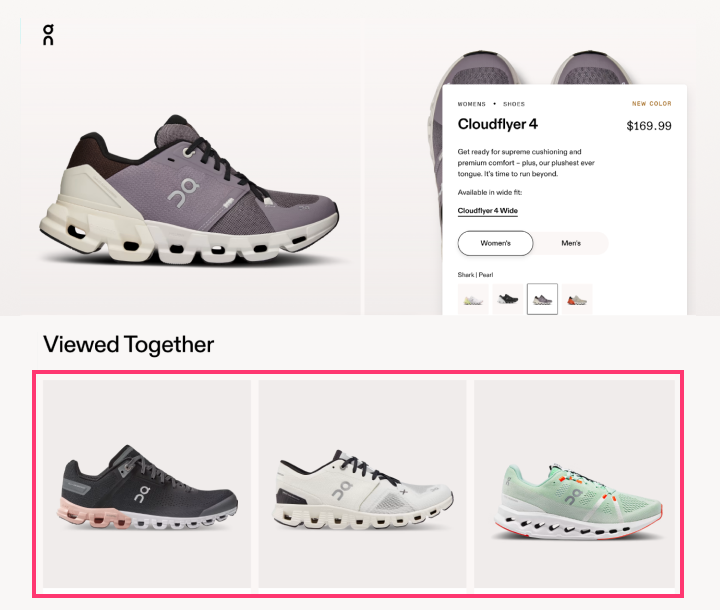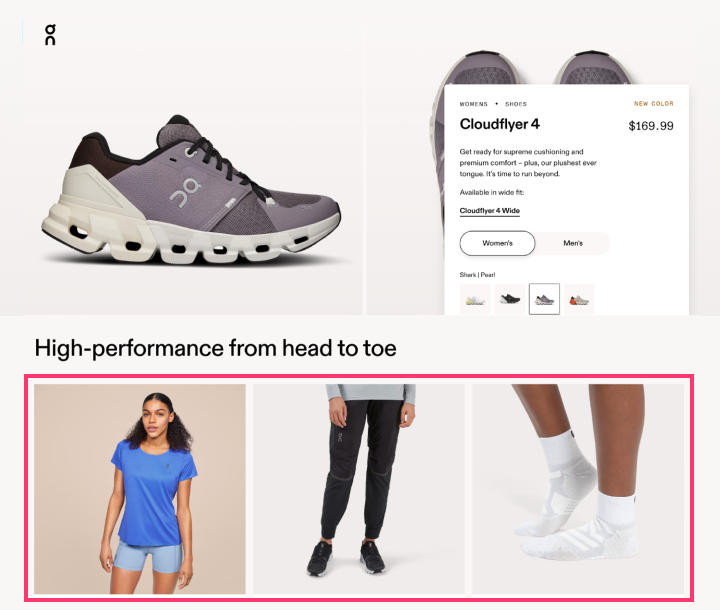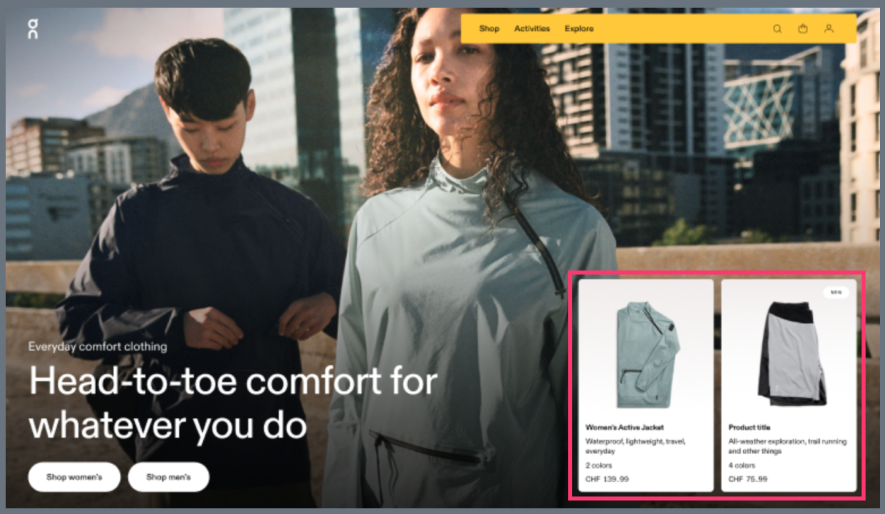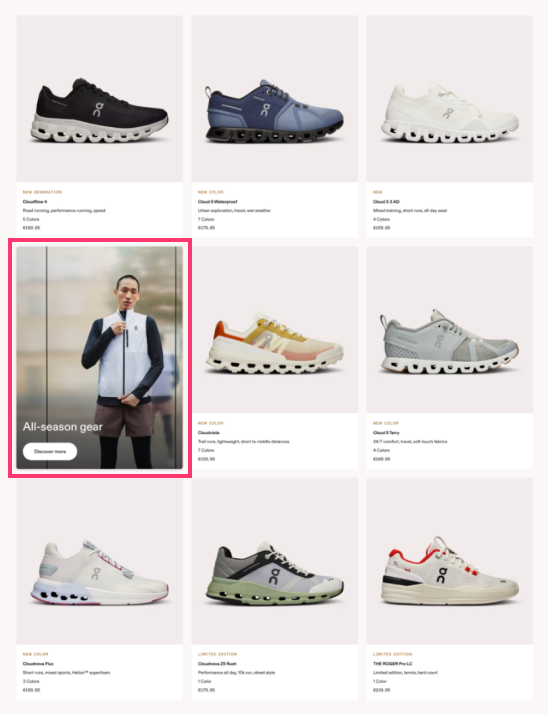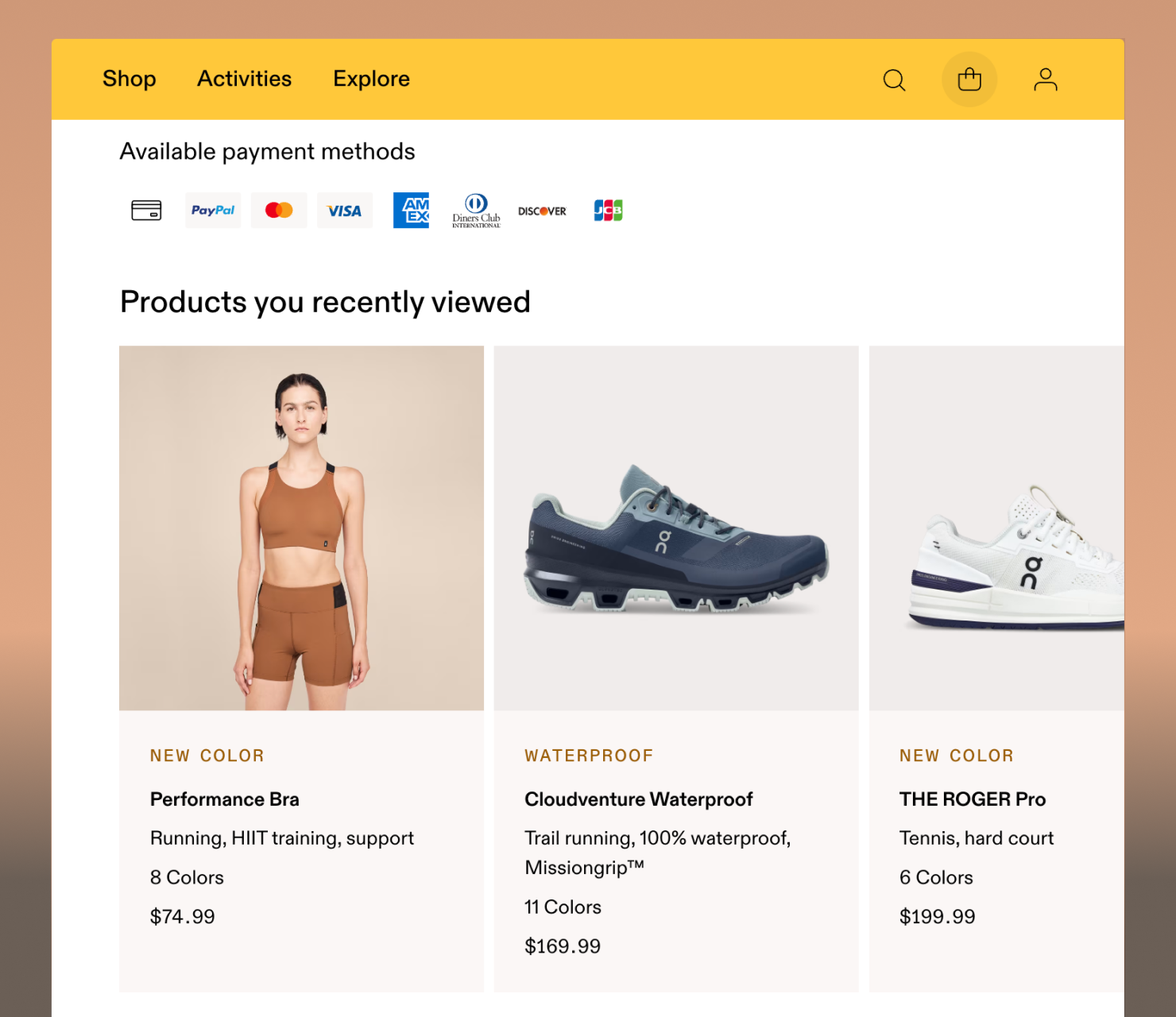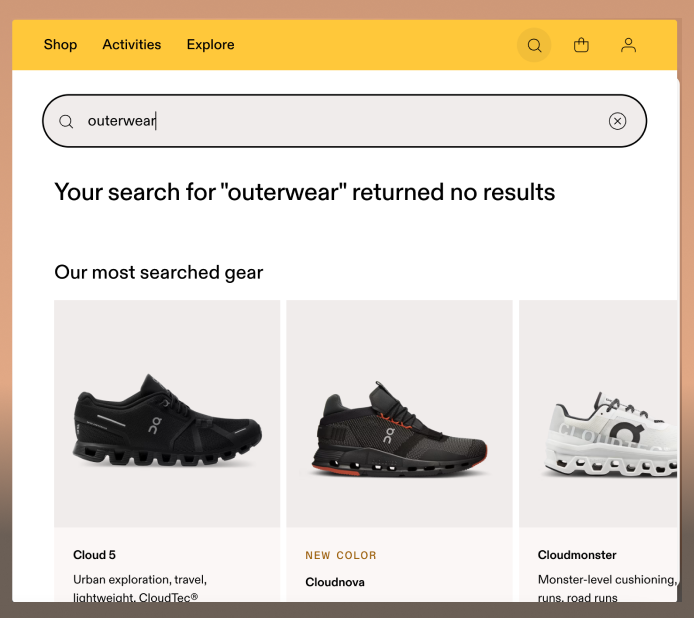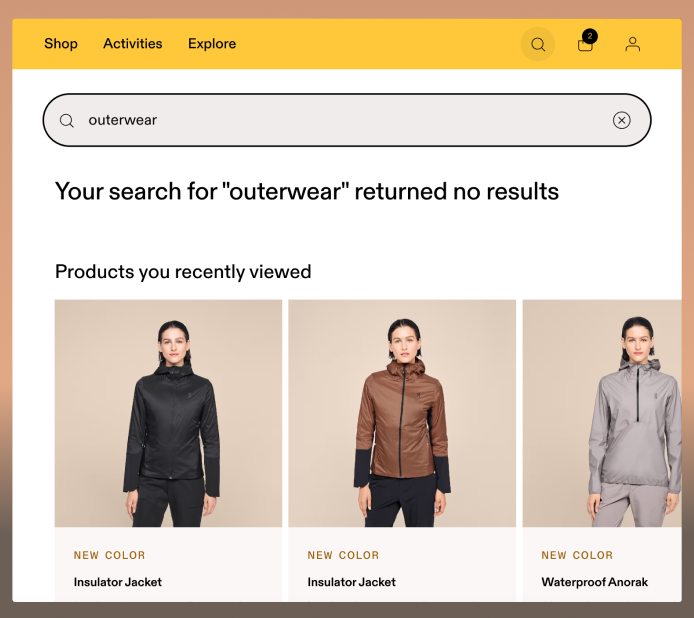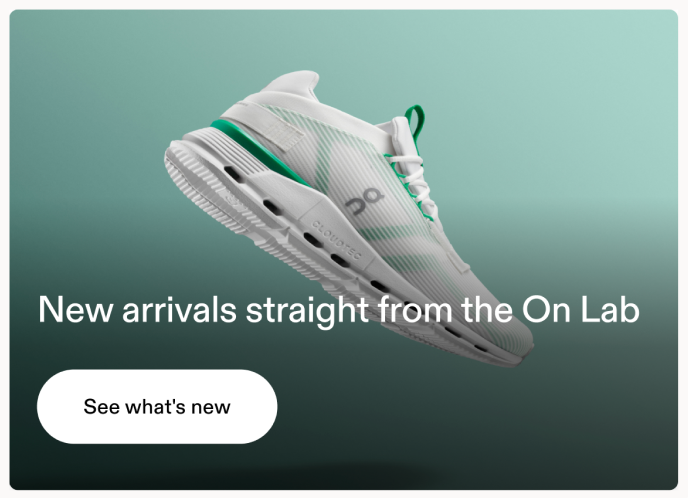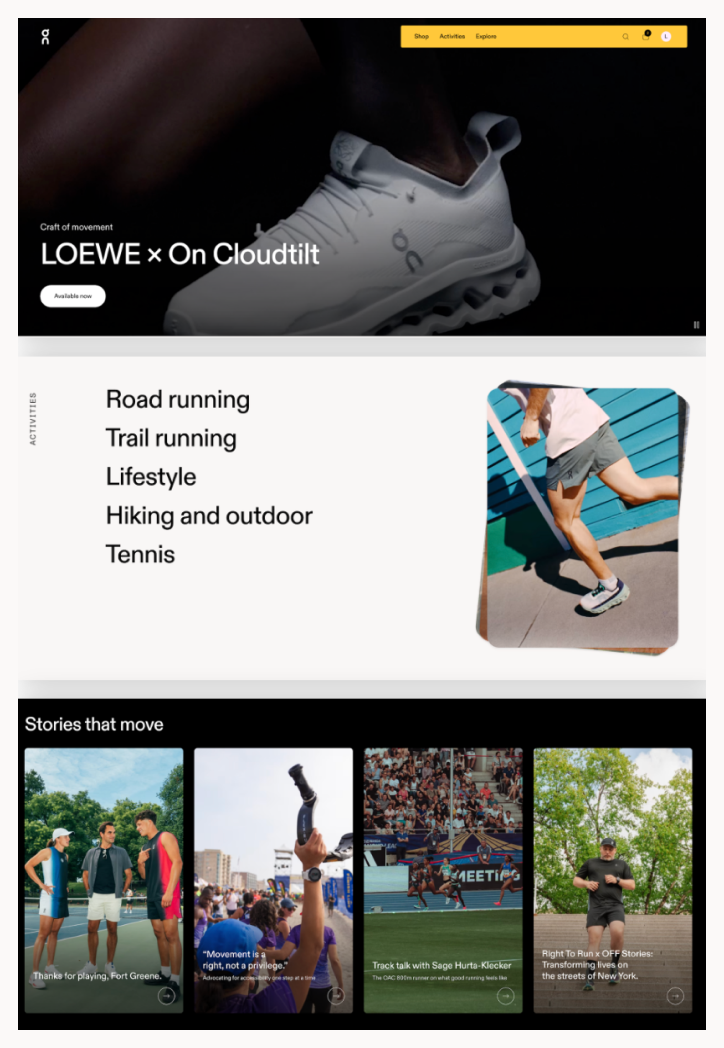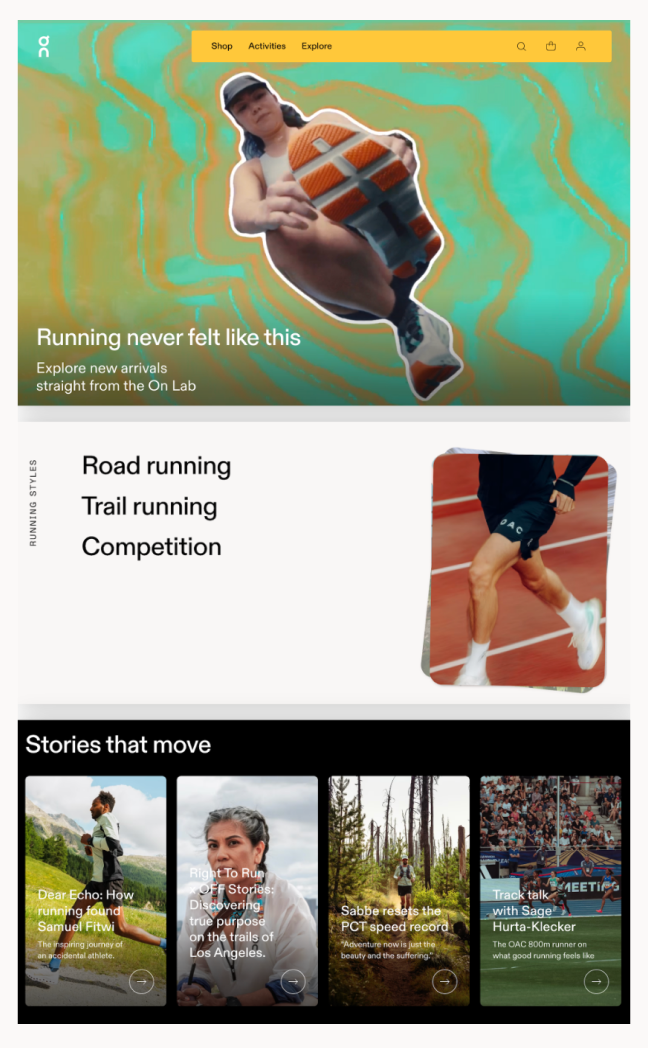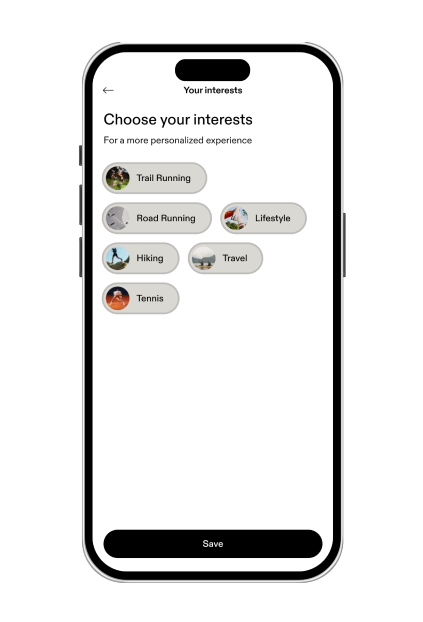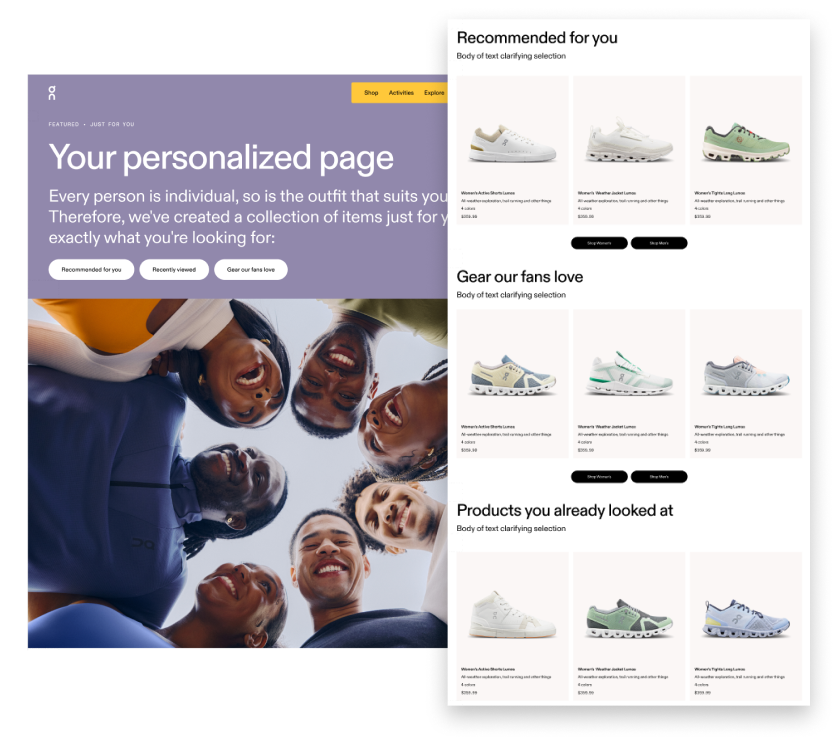Agility above all: boosting On’s world of sports with the power of personalization
See how the innovative sportswear brand is fueling its meteoric growth with a robust personalization program that delivers beyond revenue, empowering the team to build an increased sense of community and new avenues for brand engagement.
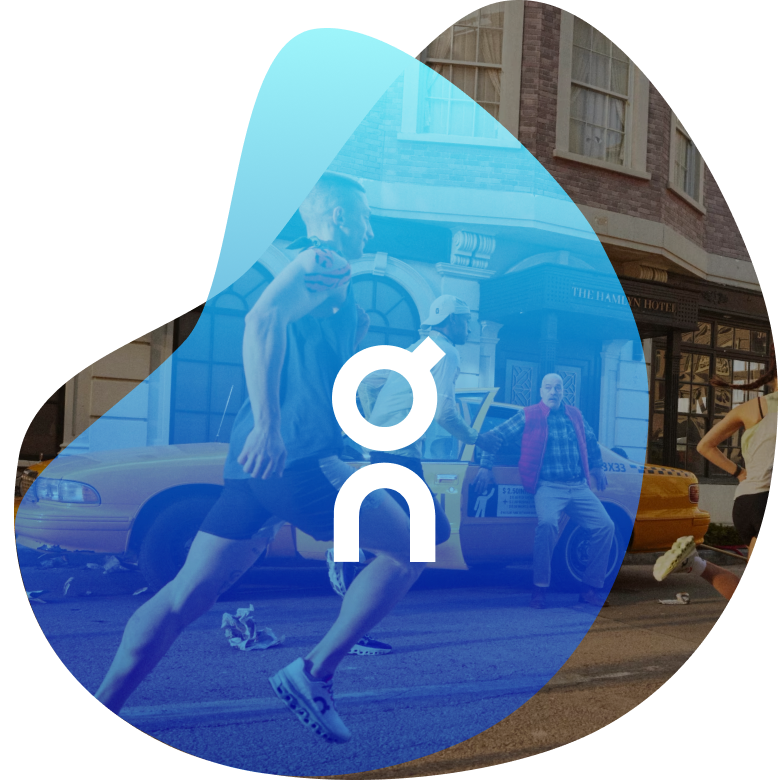
16%
of online revenue generated by personalized product recommendations
348x ROI
from Dynamic Yield
+537%
increase in CTR from promoting non-shoe products on shoe PDPs
Introduction
On, the innovative sportswear brand that captured the world with its revolutionary sneakers but has since expanded into apparel, accessories, kids’ products, and new activity verticals, has sustained its lightning-fast growth with personalization.
The brand started with Dynamic Yield in 2018, only four years after the birth of its eCommerce team and the sale of its first shoe online, and since then has used personalization to innovate through the COVID-19 pandemic, an IPO, and impressive growth that has seen the company hit nearly 2 billion in revenue.
The team extensively uses cross-site product recommendations, dynamic content, and testing to deliver hyper-tailored experiences via a combination of server-side APIs and client-side scripts.
With the recent launch of a new website — deemed On’s “24/7 digital flagship home” — the team has built an impressive roadmap, thinking outside the box with its KPIs to leverage personalized experiences as a tool to create a community, expand the brand’s image, and fuel On’s continued growth.
“Dynamic Yield is integrated at nearly every stage of the customer experience for our web and native app, providing us with cutting-edge capabilities. We’ve stayed agile even with our recent transition to server-side, and we continue to see great, transformative results from personalization. 348x ROI speaks for itself.”
– Lena Hauck, Digital Personalization Specialist, On
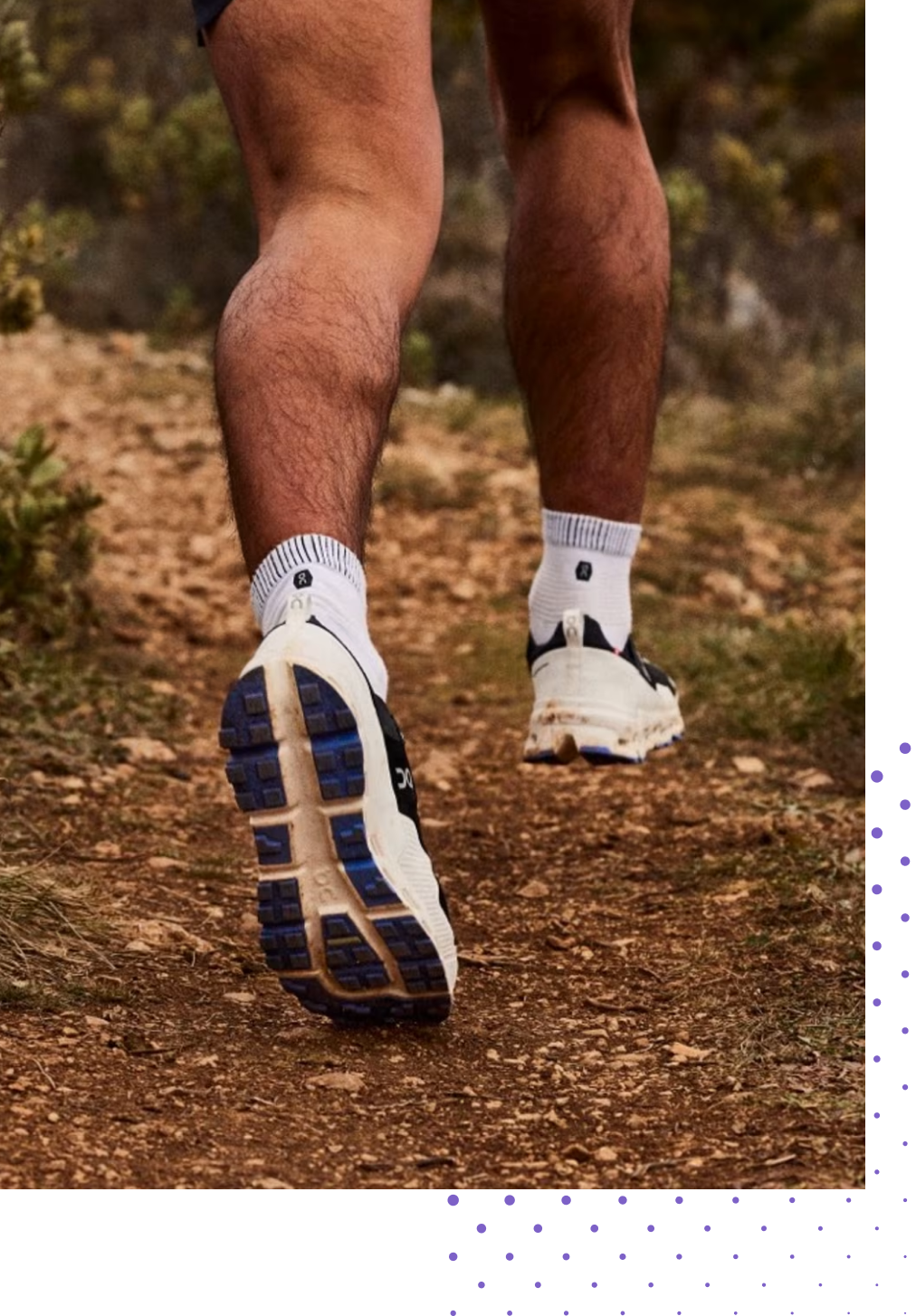
The Challenge
Tenured users of Dynamic Yield, On’s eCommerce team has generated strong results from personalization for years, running campaigns across 11 different regions worldwide.
When it comes to experience optimization and driving revenue, they are tried and true. But recently, the team has also begun thinking of personalization as a powerful tool to build a community through On’s websites and native apps. This new focus is aligned with On’s recent expanded business goals, which see the brand moving beyond its famous elite running shoes and providing lifestyle apparel for all types of movers and activities.
By reframing On’s new website through a storytelling lens, introducing new product and content recommendation strategies, tailored navigation options, and an ambitious roadmap incorporating personalized homepages and a customized native app, On is leveraging Experience OS to not only achieve its business goals but to build a community of sports enthusiasts and pros.
Early Execution
How On leveraged personalization to create a brand community
On’s goal for its new flagship website is to “ignite the human spirit through movement.” To achieve this, the team made certain strategic changes through Experience OS, which aimed to introduce a new world of storytelling, level up how the merchandise was displayed on the site, deliver more targeted content to individuals, and create flexibility.
Tactically, this meant diversifying and testing the product discovery experience to better showcase On’s expanded merchandise beyond shoes. And, the team wanted to future-proof these changes, implementing them via a series of modular components run entirely on the server side with Dynamic Yield — paving the way for eventual localization at scale, fully personalized “just for you” pages, and the introduction of a mobile app. This section will show examples of these key use cases and demonstrate why personalization is a critical tool for the brand’s growth.
Moving beyond shoes with strategic browsing changes
For the past year, product discovery has been one of On’s critical KPIs. While the team had generally mastered this in terms of product recommendations for its footwear — recommendations on shoe PDPs consistently drive an impressive 16% of On’s online revenue — the team’s specific goal was to increase product discovery for non-shoe products.
This went hand-in-hand with On’s other critical KPI: to expand brand awareness and develop a reputation as a movement-passionate community, not just a producer of quality equipment. So, the team experimented with adding storytelling and community-based experiences to its already successful product discovery campaigns, ones that would strategically guide viewers to find non-shoe products.
For example, On tested navigation with a product focus versus navigation with a community focus. The product navigation was by Category (such as Women’s, Men’s, and Accessories) and the community navigation was by Activity (such as Road Running or Hiking and Outdoor). The team found that while these options performed fairly well on their own, there was more power in combining them. Putting the Activity browsing option right next to the Category option greatly increased the overall chance that visitors would discover non-shoe products.
With both navigation options available, customers were more likely to click on an Activity category. This guarantees the visitor will discover a non-shoe product since the Activity navigation option directs users to a storytelling PLP, including a hero banner and an array of clothes, shoes, and accessories suitable for the chosen activity. This navigation option on the site increased browsing engagement from visitors overall and helped On develop its reputation beyond a shoe brand.
It also encouraged discovering non-shoe products by changing its recommendation approach on the shoe PDPs. Historically, On displayed other shoe recommendations on shoe PDPs, which yielded strong conversions. By changing this strategy to display non-shoe products only, On hoped to increase awareness of and sales in new categories.
The team learned that promotion of other apparel on the shoe PDP yielded a +537.46% increase in click-through rate for non-shoe products, achieving the team’s goal of increasing product awareness in new categories.
With this success on the PDPs, On expanded its non-shoe recommendations strategy to more site pages, ensuring customers always saw a mix of products, no matter what they were browsing for. The team used a combination of machine learning recommendation strategies, including deep learning and hybrid strategies, and placed customer-centric product recommendations on the homepage, shoe product listing pages, and cart page to encourage discovery and cross-sells throughout the customer journey.
Overall, cross-selling in different categories and page types improved engagement with non-shoe products and boosted conversions. For example, On found that over 55% of shoe PLP visitors clicked on the cross-selling card from that page, yielding an uplift in conversions from this audience group.
Increasing conversion and AOV with personalized content
Aside from purpose-built product recommendations specifically designed to expand awareness of On’s non-shoe categories, the team also runs sophisticated recommendations based on advanced audience segmentation and an individual’s browsing behavior. These personalized experiences encourage conversion and increase average order value.
For example, personalized recommendations appear in the overlay cart and are viewable at any time, from any page:
The positive performance of this widget is due in part to On’s advanced audience segmentation and targeting. On uses a Recently Viewed strategy if a visitor has at least two PDP views; if the visitor has no views, the strategy reverts to Popularity. If the visitor has one shoe product in their cart, the recommendation strategy is Bought Together with an apparel product pinned to appear in the first slot (as shown in the image here). If the visitor has one item in the cart but does not fall into any other logic, the recommendation strategy shows Bought Together, filtered for only accessories.
The cart recommendation widget is On’s top-performing personalization experience based on direct revenue per click. However, On continuously tests this recommendation logic throughout the year to optimize performance. Most recently, the team ran an A/B test to consider gender affinity versus no gender affinity in all suggested items. In one variation, the popularity fallback filtered for Men drove a +30% increase in click-through rate, yielding a +1.86% uplift in purchases.
On also uses AI recommendations as a powerful tool for re-engagement. For example, if a customer searches for a specific item and receives no results, a recommendation widget appears within the search overlay to encourage the visitor to keep browsing.
For visitors with fewer than two PDP views, the recommendation strategy is Popularity. For visitors with over two PDP views but less than five, the strategy is Recently Viewed combined with Dynamic Yield’s cutting-edge NextML deep learning algorithms. If the visitor has over five PDP views, the strategy is Recently Viewed. Even though this experience was deployed near the end of the year, the slider still drove 1% of the year’s total direct revenue from recommendations.
Finally, because much of On’s gear is worn outside by athletes in various types of weather, the team experiments with location- and weather-based experiences that reflect the weather in a visitor’s region. This real-time messaging capitalizes on a customer’s most likely current need and generates engagement and conversion.
The team has experimented on and off with running a weather-based homepage banner in several markets. If it is raining in the location of the visitor, the visitor will see a banner addressing the rainy weather, instead of the default experience, which makes no reference to the weather.
Overall, the On team sees a positive impact on CTR if the homepage banner displays rainy weather content when it is currently raining in the region.
The future of personalization at On
With the new website launched, performing well, and the team fully converted to running modular experiences via API, On’s next goal is to bring all data points from a customer together to provide an even more personalized experience. The team plans to do this through individualized home pages, personalized shopping pages, and the launch of a new app.
Currently, On’s homepage contains campaign-driven content, but the team believes they can create a more aligned brand experience and drive better results with community-driven content, as shown here:
On plans to build variations of the homepage targeted to all its key activities, including running, tennis, movement, lifestyle, and travel.
Expanding on this idea, On also plans to deploy a personalized shopping page for logged-in account holders on the website. This experience is coordinated to complement the launch of the brand’s first app, which will be personalized with Dynamic Yield and include an onboarding questionnaire to get more targeted with customers’ interests.
Following the launch of these exciting experiences and its new channel on mobile app, On plans to continue pushing the boundaries of personalization by focusing on localization across priority markets and developing more nuanced audience groups.
The Key Takeaway
Personalization is a critical pillar of On’s eCommerce strategy, one which has empowered the team to move beyond simply delivering optimized experiences and incremental revenue. The team has leveraged Dynamic Yield in every part of its site and coming mobile app to create community-driven experiences that boost brand awareness and loyalty — factors which have led to and sustained On’s meteoric growth. With a new website transitioned entirely server-side and the right tools and data in place, On can push the boundaries of personalization by engaging with customers on a one-to-one level, combining product recommendations with storytelling content for a sustainable and exciting future.
